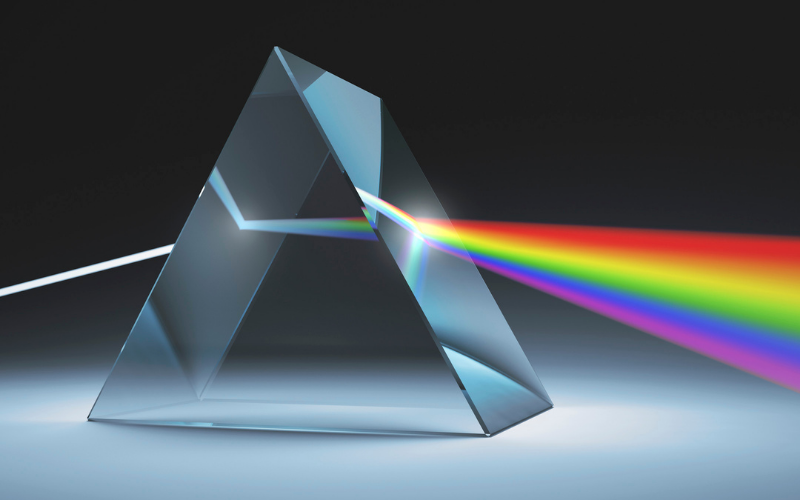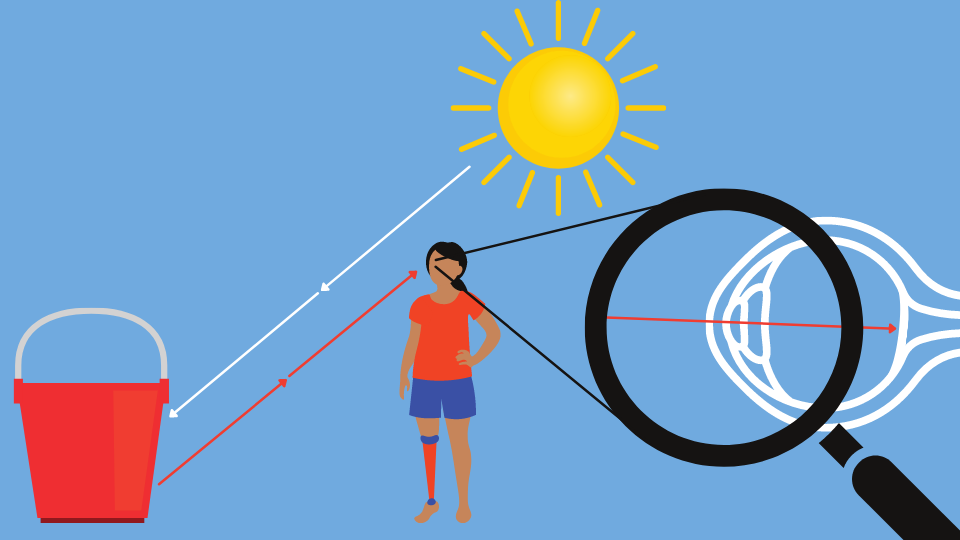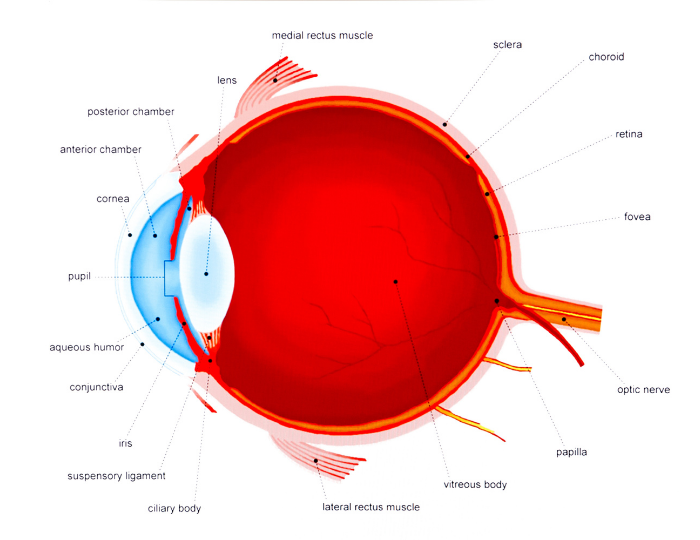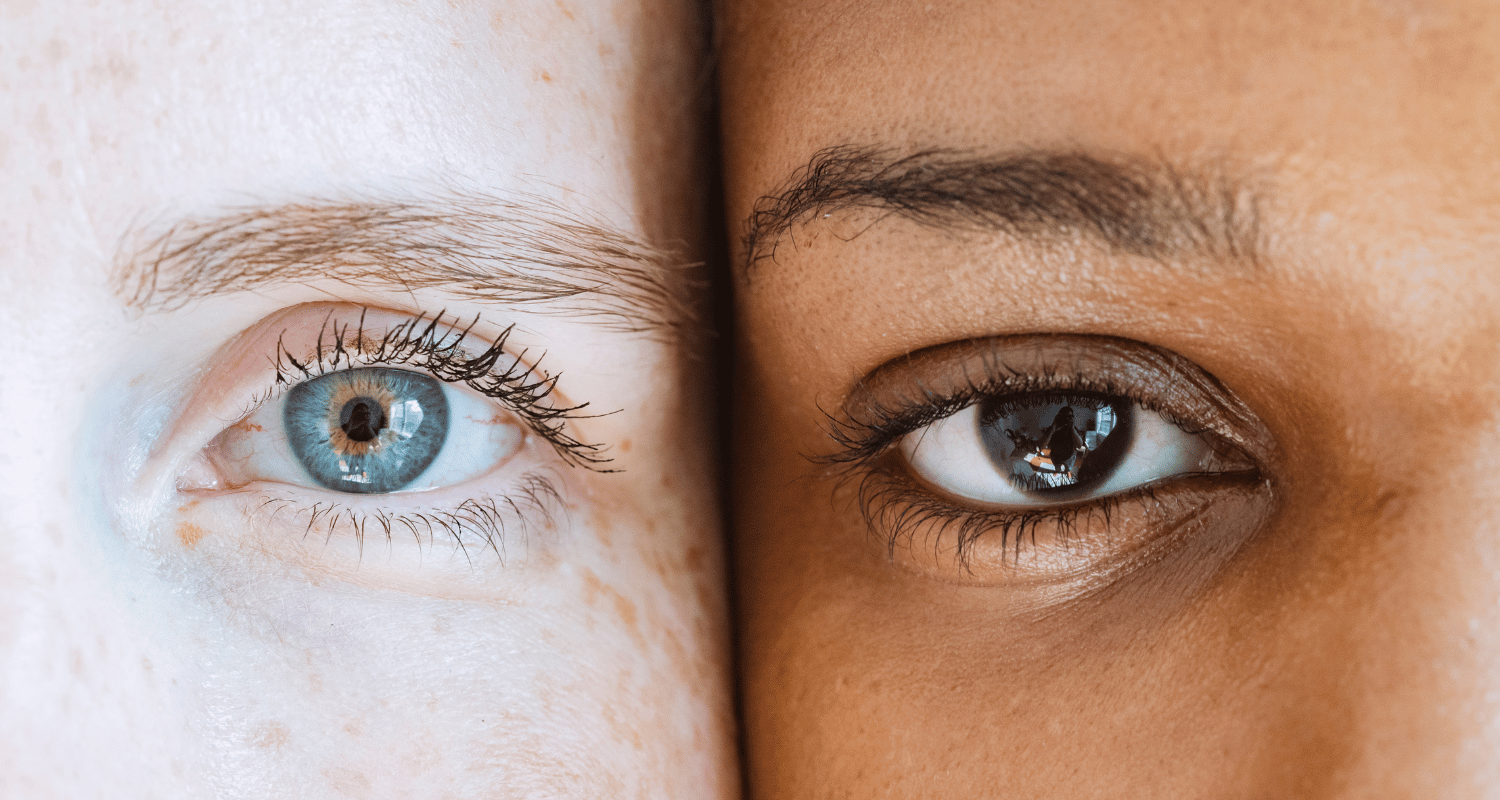
By Dr. Larissa Vingilis-Jaremko
Have you ever wondered why the pupil is black?
This is a great question. First, let’s discuss how we see from a broad perspective. Light travels in waves from a source like the sun or a lightbulb. White light is made of all of the colours of the rainbow, with shorter wavelengths visible as violet, and longer wavelengths visible as red.

If you have ever seen a rainbow produced by a prism, you saw the white light separate into its component wavelengths. When white light enters the prism, each wavelength refracts (bends) to a different degree. This results in the rainbow you see on the other side. If you recombine those wavelengths, you end up with white light again.

Now let’s imagine a red pail. When white light hits the red pail, all wavelengths are absorbed except for the red wavelengths, which are reflected. Some of those reflected red wavelengths travel toward your eye.

Once the red wavelengths reach your eye, they travel through the pupil, the black dot in the centre. Your pupil is black because it’s a hole! After the light passes through the pupil, it travels through the lens, through the vitreous humor (a clear gel inside your eye ball), then hits the retina, located at the back of your eye. There, photoreceptors convert the information into electrochemical signals, which travel along the optic nerve to the visual cortex at the back of your brain, for further processing.

Have you ever noticed that your pupil is sometimes small and sometimes large? Your iris, the coloured circle around your pupil (brown, green, blue, or hazel, depending on your eye colour) changes the size of the pupil based on light levels. If you are in a bright environment, the pupil constricts, or shrinks, and limits the amount of light entering the eye. If you are in a dark environment with low light levels, the pupil dilates, or grows, allowing more light to enter the eye. You can test this at home by looking at the size of your pupil in a mirror after you have been in the dark for at least 30 minutes, compared to when you have been in a bright room. The pupil should be larger in the dark or dim light compared to bright light. You can even see your pupil constrict if you’re in the dark and you turn the lights on – the size of your pupil shrinks quickly in response to bright light. If, however, you try the reverse, and dim the lights after being in a bright room, it takes some time for the pupil to dilate and become larger.







